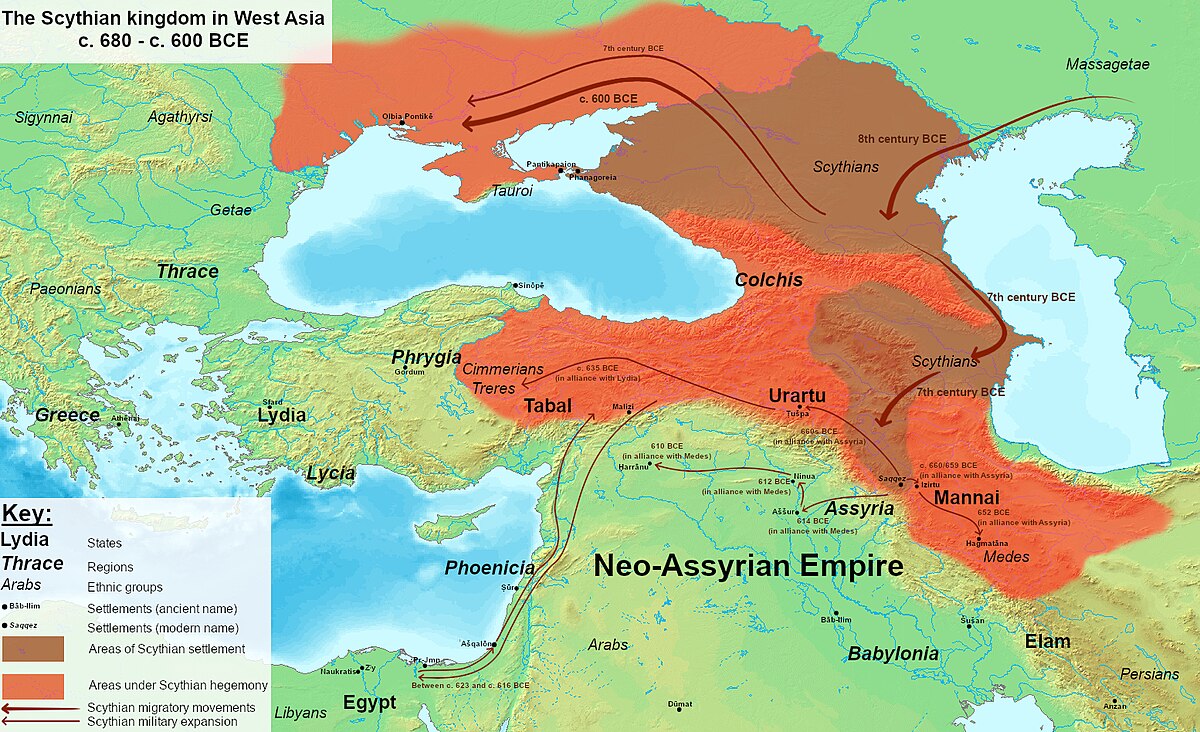Azerbaijanis, Turks, Kurds and Armenians all have indigenous regional components. The Azeris and Turks are ethnically mixed and they aren't all eastern Eurasian Mongolic-Asiatic/Turanic types.
A 2003 study found that: "Y-chromosome haplogroups indicate that Indo-European-speaking Armenians and Turkic-speaking Azerbaijanians (of the Republic of Azerbaijan) are genetically more closely related to their geographic neighbors in the Caucasus than to their linguistic neighbors elsewhere."[84] The authors of this study suggest that this indicates a language replacement of indigenous Caucasian peoples. There is evidence of limited genetic admixture derived from Central Asians (specifically Haplogroup H12), notably the Turkmen, that is higher than that of their neighbors, the Georgians and Armenians. MtDNA analysis indicates that the main relationship with Iranians is through a larger West Eurasian group that is secondary to that of the Caucasus, according to a study that did not include Azeris, but Georgians who have clustered with Azeris in other studies.[86] The conclusion from the testing shows that the Caucasian Azeris are a mixed population with relationships, in order of greatest similarity, with the Caucasus, Iranians and Near Easterners, Europeans, and Turkmen. Other genetic analysis of mtDNA and Y-chromosomes indicates that Caucasian populations are genetically intermediate between Europeans and Near Easterners, but that they are more closely related to Near Easterners overall. Another study, conducted in 2003 by the Russian Journal of Genetics, links Iranians in Azerbaijan (the Talysh and Tats) with Turkic
Azerbaijanis of the Republic:
“the genetic structure of the populations examined with the other Iranian-speaking populations (Persians and Kurds from Iran, Ossetins, and Tajiks) and Azerbaijanis showed that Iranian-speaking populations from Azerbaijan were closer to Azerbaijanis than to Iranian-speaking populations inhabiting other world regions.
Azerbaijanis of the Republic:
“the genetic structure of the populations examined with the other Iranian-speaking populations (Persians and Kurds from Iran, Ossetins, and Tajiks) and Azerbaijanis showed that Iranian-speaking populations from Azerbaijan were closer to Azerbaijanis than to Iranian-speaking populations inhabiting other world regions.
European back-migration to the region is also quite intresting.
------
Recent back-migration can be estimated by an examination of the presence, in the Near East, of clusters that are most likely to have evolved within Europe. Haplogroup U5 is very ancient (50,000 years old) in both Europe and the Near East, but it occurs more sporadically in the Near East and is absent from Arabia.
In the Near East, it is largely restricted to peripheral populations (Turks, Kurds, Armenians, Azeris, or Egyptians): only three individuals from the core Near Eastern regions (namely, the Fertile Crescent and Arabia) harbor U5 sequence types; of these, one is the root sequence type, whereas the other two are members of the highly derived subcluster U5a1a (for the nomenclature for U5, seetable 2). Overall, 8 of 22 Near Eastern U5 types are members of this highly derived subcluster, and an additional 6 are members of the next-most-derived subcluster, U5a1*. There are four members of U5b, one member of U5a*, and only three members of U5*.
Moreover, these Near Eastern types are frequently derivatives of European intermediate types: one Egyptian type is derived from a Basque type, and many Armenian and Azeri types are derived from European and northern-Caucasian types.
Therefore, whereas the U5 root sequence type (16270) could conceivably have originated in the Near East and have spread to Europe 50,000 YBP, with recurrent back-migration ever since, a European origin for the U5 cluster seems just as probable. In either case, the U5 cluster itself would have evolved essentially in Europe. U5 lineages, although rare elsewhere in the Near East, are especially concentrated in the Kurds, Armenians, and Azeris.
This may be a hint of a partial European ancestry for these populations—not entirely unexpected on historical and linguistic grounds—but may simply reflect their proximity to the Caucasus and the steppes. Of the Near Eastern lineages, 1.8% (95% CR = .012–.027) are members of U5, in contrast to 9.1% (95% CR = .081–.103) in Europe; in the core region of Syria-Palestine through Iraq, the proportion falls to 0.5% (95% CR = .002–.015). Overall, this suggests the presence of as much as 20% of back-migrated mtDNA in the Near East but only 6% in the core region.
In the Near East, it is largely restricted to peripheral populations (Turks, Kurds, Armenians, Azeris, or Egyptians): only three individuals from the core Near Eastern regions (namely, the Fertile Crescent and Arabia) harbor U5 sequence types; of these, one is the root sequence type, whereas the other two are members of the highly derived subcluster U5a1a (for the nomenclature for U5, seetable 2). Overall, 8 of 22 Near Eastern U5 types are members of this highly derived subcluster, and an additional 6 are members of the next-most-derived subcluster, U5a1*. There are four members of U5b, one member of U5a*, and only three members of U5*.
Moreover, these Near Eastern types are frequently derivatives of European intermediate types: one Egyptian type is derived from a Basque type, and many Armenian and Azeri types are derived from European and northern-Caucasian types.
Therefore, whereas the U5 root sequence type (16270) could conceivably have originated in the Near East and have spread to Europe 50,000 YBP, with recurrent back-migration ever since, a European origin for the U5 cluster seems just as probable. In either case, the U5 cluster itself would have evolved essentially in Europe. U5 lineages, although rare elsewhere in the Near East, are especially concentrated in the Kurds, Armenians, and Azeris.
This may be a hint of a partial European ancestry for these populations—not entirely unexpected on historical and linguistic grounds—but may simply reflect their proximity to the Caucasus and the steppes. Of the Near Eastern lineages, 1.8% (95% CR = .012–.027) are members of U5, in contrast to 9.1% (95% CR = .081–.103) in Europe; in the core region of Syria-Palestine through Iraq, the proportion falls to 0.5% (95% CR = .002–.015). Overall, this suggests the presence of as much as 20% of back-migrated mtDNA in the Near East but only 6% in the core region.





Leave a comment: